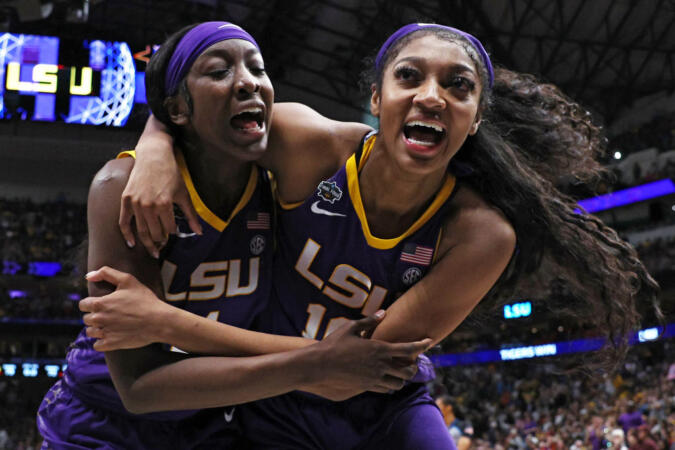This article is a part of Blavity U Spirit Week 2023.
Introducing name, image and likeness contracts has changed the game for high school and college athletes. Historically, the efforts of these athletes were acknowledged by local stardom, possible TV time and the advancement to the next level in their respective sports.
The origin of the NIL contract is the landmark Supreme Court case NCAA v. Alston. In 2020, West Virginia University athlete Shawne Alston sued the organization regarding “non-cash education-related benefits.”
The running back argued that schools should cover student expenses that scholarships do not include, opening the door for student-athletes to receive extra academic money and compensation for their likeness and participation.
In July 2022, the introduction of NIL contracts made it possible for college athletes to begin receiving compensation. Governing collegiate sports entities such as the NCAA have been profiting from the efforts of these athletes for years. They could now obtain a piece of the pie before going pro. While the contract guidelines prohibited schools from directly paying athletes to play, according to ESPN, the players could now receive compensation through endorsements, participating in advertisement campaigns, monetizing social media accounts, starting a business or simply signing autographs.
FirstPoint USA claims NIL contracts topped over $900 million in 2022.
One of the most recent examples is Louisiana State University’s Angel Reese inking a deal with Reebok. The ‘Bayou Barbie’ leads the way in NIL contracts for any college athlete, male or female. According to Front Office Sports, her deal valuations top $1.7 million with brands such as McDonald’s, Xfinity and Bose in her portfolio.
Her new deal was the first objective of Reebok’s newly appointed basketball division president, Shaquille O’Neal.
He crowned his new signee the GOAT and said, “There is no one making a bigger impact on the game right now than Angel Reese.”
The availability for income trickled down to the high school athletes as well. In 2021, high school student Quinn Ewers made national news by signing a $1.4 million deal that resulted in skipping his senior year at Carroll Senior High School to sign on at Ohio State.
The NCAA saw the earning potential of high school students and the increased risk of them entering college early, so some states began allowing them to sign NIL deals without hurting their chances of playing for their chosen college or university.
View this post on Instagram
While each state differs in guidelines of what students can and cannot receive, NIL contracts are about more than just providing millions to young athletes but allowing them to create a foundation for themselves without depending on making it to the big leagues.
The exposure from endorsements and campaigns allows athletes to get introduced to larger markets, leading to better education opportunities. Universities are initiating educational programs to help athletes understand the financial implications and responsibilities of NIL contracts. These programs aim to equip athletes with the knowledge and skills to manage their finances and endorsements wisely.
The long-term impact of NIL contracts on the college sports landscape remains uncertain. The deals have created a significant shift in the operations of college sports. Athletes now have more control over their image, income and futures if the professional leagues aren’t an option.
Some argue that emphasizing NIL deals and contract offers will sway student-athletes away from studies and only focus on exposing their athletic performance.
However, the increased commercialization of high school and college sports allows players to secure their futures and benefit from the billion-dollar industry they contributed to.

